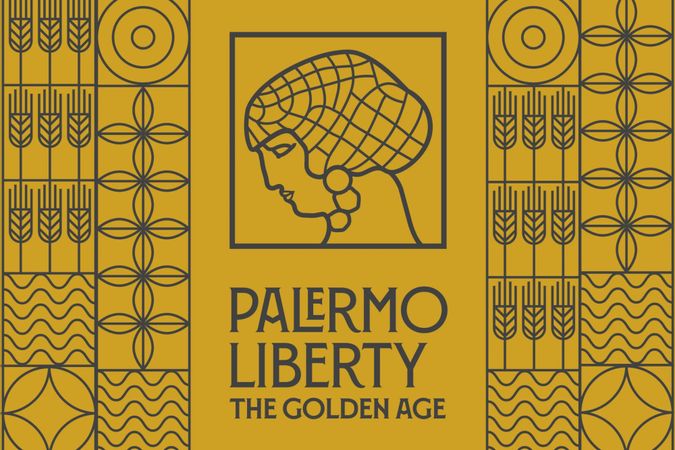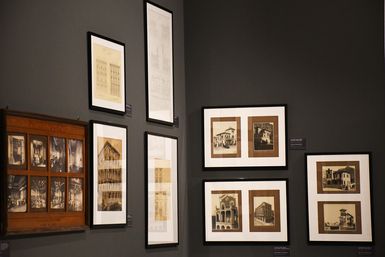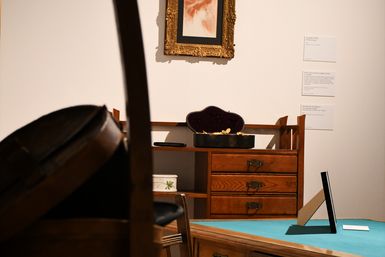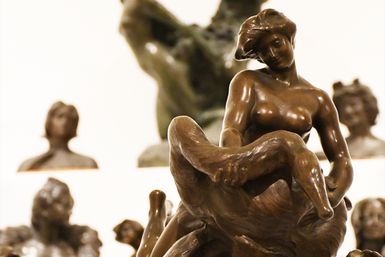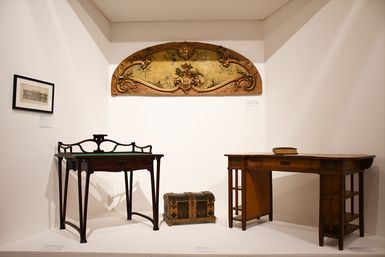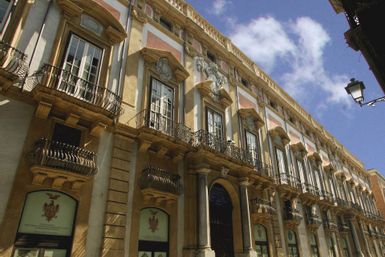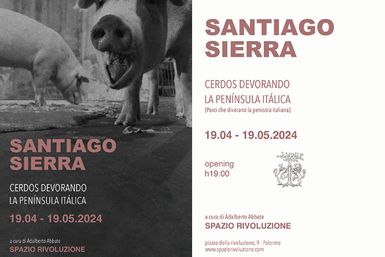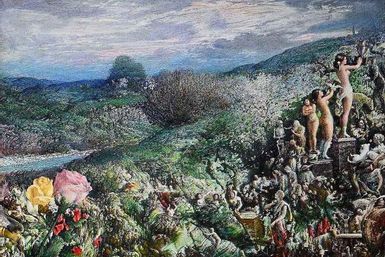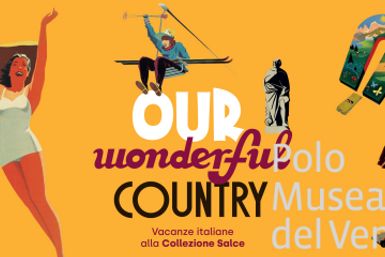Curated by: Cristina Costanzo, Massimiliano Marafon Pecoraro, Ettore Sessa
The show
From 16 December at Palazzo Sant'Elia an important exhibition dedicated to the art, culture and society of the very happy Palermo. Around 500 works from 1897 to 1923 are on display. A long exhibition itinerary that recounts the thousand facets and the many protagonists of a unique season.
Palermo Liberty - The Golden Age , curated by Cristina Costanzo, Massimiliano Marafon Pecoraro and Ettore Sessa, it is a project of the Sant'Elia Foundation dedicated to the art and society of the happy period of the floral style in Palermo, conceived and coordinated by Antonio Ticali, Superintendent of the Foundation. The exhibition is the result of the work of a scientific committee chaired by Maria Concetta Di Natale and formed, in addition to the curators, by Danilo Maniscalco, Eleonora Marrone Basile, Raffaello Piraino and Dario Russo. The installation is curated by Silvia Cattiodoro and Calogero Vinci of the University of Palermo and by Laura Galvano of Turismo, for the room dedicated to the Pupa del Capo and for the immersive room. The architect Galvano is a member of the project's control room together with Daniela Segreto, head of the Department's Cabinet.
The exhibition presents the most significant production of the protagonists of Art Nouveau in Palermo and aims to offer a multi-voiced testimony on the arts, freed from the distinction between major and minor.
One of the objectives of the initiative is to shine the spotlight on a widespread heritage, which has suffered tragic destruction and continues to be the subject of dispersion. For this reason, during the opening period, the exhibition includes a series of collateral events and initiatives dedicated to the multiple opportunities for new insights and valorisation, also from the point of view of the tourist offer, of the numerous still existing testimonies of this period.
The exhibition is a production of the Sant'Elia Foundation, supported by the Department of Tourism, Sport and Entertainment of the Sicilian Region and by the Metropolitan City of Palermo, with the patronage of the Ministry of Tourism, the Ministry of Culture, the Sicilian Regional Assembly, of the Regional Department of Cultural Heritage and Sicilian identity, of the Municipality of Palermo, of the University of Palermo, of the CRicd, of the Central Library of the Sicilian Region, of the Résau Art Nouveau Network, of the Observatory for Decorative Arts in Italy " Maria Accascina”, of the Conseil de l'Europe, of the Ernesto Basile Archive, of the Raffaele Piraino House Museum, of Villa Igiea, at Rocco Forte Hotel.
“The Golden Age”, a true golden age, which sees great designers, painters, sculptors, decorators, artisans and manufacturing companies working together to create a new city, suited to the needs of modernity and the bourgeoisie. In a period of change and economic and social development, a school established itself, under the aegis of Ernesto Basile, which made the city one of the Italian capitals of this style. In fact, in those years, a cultural climate developed in Palermo which, while not forgetting its roots, developed an autonomous way of looking at the contemporary European debate and embraced all sectors of knowledge and creativity with a language linked to the stylistic features of Liberty , which opens the doors to contemporaneity.
The exhibition itinerary occupies the entire Palazzo Sant'Elia and offers a great journey through the many facets of Art Nouveau Palermo, guiding visitors to understand the art, culture and society of those years. The exhibition presents around five hundred works including architectural and applied arts drawings, furnishings, paintings, sculptures, bas-reliefs, tapestries, ceramics, decorative sketches, photographs, stained glass windows, jewelery and clothing, coming from public and private collections and archives capable of offering a wide-ranging insight and critical insight into a very happy season. The exhibition is enriched by video installations created by Calogero Sorce and period video materials.
The beginning of this "Art Nouveau culture itinerary" coincides with the completion in 1897 of the works on the grandiose construction site of the Teatro Massimo by Giovan Battista Filippo and Ernesto Basile and ends with the completion in 1923 of the construction of the Cinema Massimo by Giovan Battista Santangelo (one of the most significant students of the "Ernesto Basile School"), in the same Piazza Verdi where the opera seasons of the Teatro Massimo took place.
From the second half of the 19th century Palermo, defined by Leonardo Sciascia as a "small capital of Art Nouveau", took the form of a new city thanks to significant interventions such as the Redevelopment and Expansion Plan by Felice Giarrusso (whose tables are partly exhibited at Palazzo Sant'Elia) and the construction of two theatres: Giuseppe Damiani Almeyda's Politeama Garibaldi and the Teatro Massimo Vittorio Emanuele.
The flowering of a peculiar physiognomy of Palermo Liberty is qualified by the activity of a team of artists trained between the school of Francesco Lojacono and the cenacle of Ernesto Basile, including Paolo Bevilacqua, Michele Cortegiani, Ettore De Maria Bergler, Luigi Di Giovanni, Gaetano Geraci, Salvatore Gregorietti, Ettore Ximenes, Antonio Ugo and other refined interpreters of the "unitary collaboration" between artists, architects and artisans. The symbol of this season is the mosaic of the Morello Bakery, known as the "pupa del Capo".
The decorative and industrial arts constitute one of the most choral manifestations of Liberty both with the action of ornamentalists, figure painters, plasterers, ceramists, mosaicists, master glassmakers and wrought iron workers and with the remarkable products of cabinetmakers and furniture and furnishing industrialists , among which stand out the companies of Albert Ahrens, Andrea Mucoli, Salvatore Petrì, but above all Vittorio Ducrot (heir to Carlo Golia's company). On display at the Gallery of Modern Art in Rome, the precious secretaire designed by Ernesto Basile and produced by the Ducrot furniture factory with pictorial interventions by Ettore De Maria Bergler and bronze figurines by Antonio Ugo.
The chronological span of the exhibition unfolds through four time sections (1897-1902; 1903-1910; 1911-1919; 1920-1923) with references to significant precedents such as the National Exhibition of 1891.
Among the many furnishings on display, the furniture from Ernesto Basile's studio house in via Siracusa stands out, which will soon be usable thanks to the Basile House Museum project, which will be created following the collaboration between the Regional Department of Cultural Heritage and the Archive Basile.
The exhibition offers the general public Liberty in its entirety thanks, above all, to the precious selection of clothes and accessories from the Piraino collection and to a section of Sicilian jewels and goldsmith's designs, emblematic of an entrepreneurial, artisanal and artistic fabric of European scope. Women and their role in society are valorised on the one hand through the unprecedented history of Sicilian tailors and milliners, the result of the meticulous research of Raffaello Piraino, and on the other by jewels, protagonists of Sicilian decorative arts for centuries and, has been at the forefront of the European historical and artistic panorama for some time thanks to the tireless commitment of Maria Concetta Di Natale.
The cadet floor of Palazzo Sant'Elia hosts the video sections dedicated to the "sack of Palermo" conceived with the contribution of the CRICD (Regional Center for the inventory, cataloging and graphic, photographic, aerial photogrammetric, audiovisual documentation); at the Targa Florio with the collaboration of ACI Sport and the Municipality of Termini Imerese; and to Ducrot, created with the contribution of the National Film School - Sicily branch, with an excerpt from the documentary by Sergio Ruffino and Martina Amato. One room is dedicated to the furnishings of E. Basile reconstructed with material and immaterial updating by the Caruso Handmade company and other rooms are instead intended for educational laboratories.



